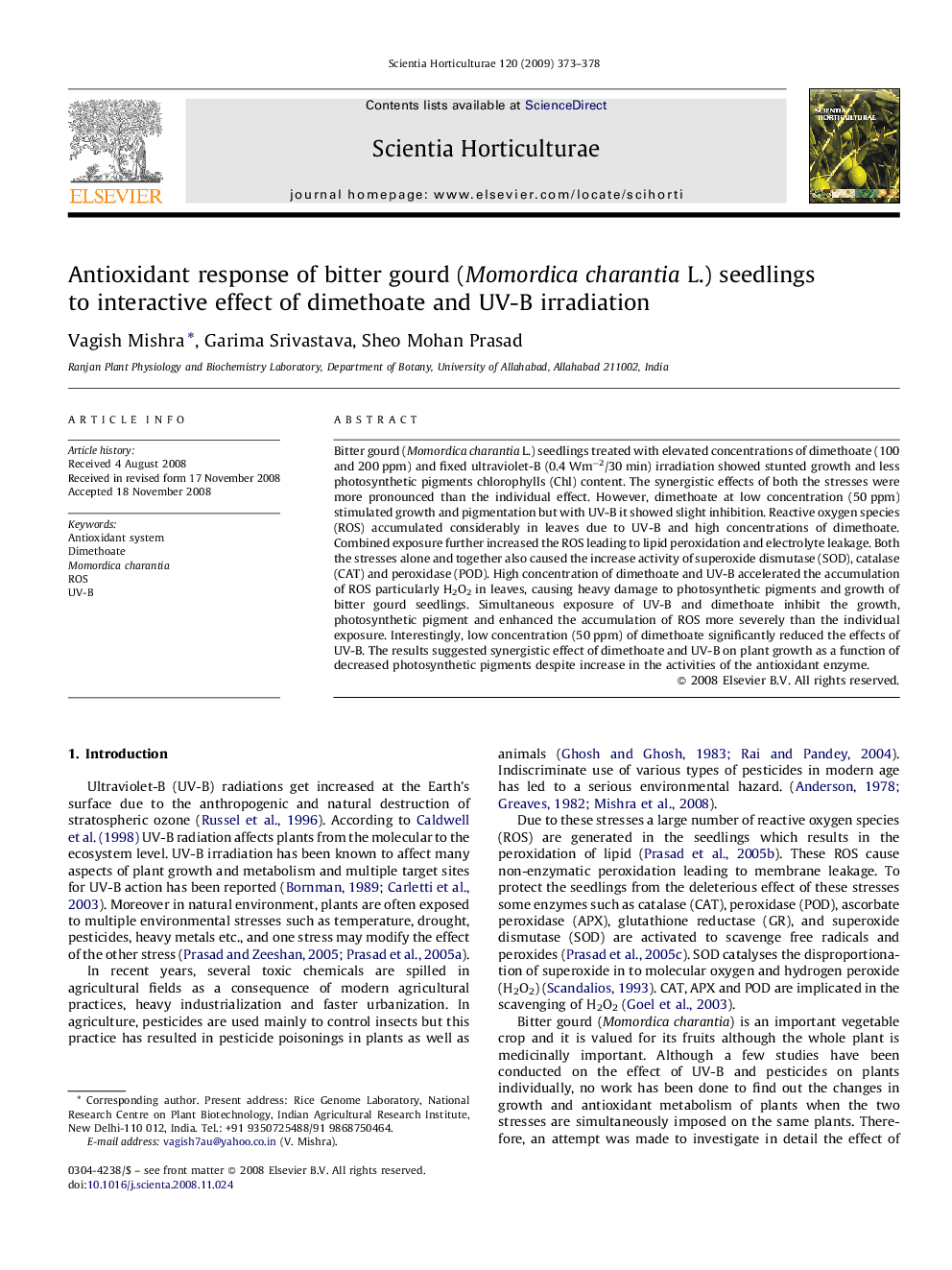| Article ID | Journal | Published Year | Pages | File Type |
|---|---|---|---|---|
| 4569138 | Scientia Horticulturae | 2009 | 6 Pages |
Bitter gourd (Momordica charantia L.) seedlings treated with elevated concentrations of dimethoate (100 and 200 ppm) and fixed ultraviolet-B (0.4 Wm−2/30 min) irradiation showed stunted growth and less photosynthetic pigments chlorophylls (Chl) content. The synergistic effects of both the stresses were more pronounced than the individual effect. However, dimethoate at low concentration (50 ppm) stimulated growth and pigmentation but with UV-B it showed slight inhibition. Reactive oxygen species (ROS) accumulated considerably in leaves due to UV-B and high concentrations of dimethoate. Combined exposure further increased the ROS leading to lipid peroxidation and electrolyte leakage. Both the stresses alone and together also caused the increase activity of superoxide dismutase (SOD), catalase (CAT) and peroxidase (POD). High concentration of dimethoate and UV-B accelerated the accumulation of ROS particularly H2O2 in leaves, causing heavy damage to photosynthetic pigments and growth of bitter gourd seedlings. Simultaneous exposure of UV-B and dimethoate inhibit the growth, photosynthetic pigment and enhanced the accumulation of ROS more severely than the individual exposure. Interestingly, low concentration (50 ppm) of dimethoate significantly reduced the effects of UV-B. The results suggested synergistic effect of dimethoate and UV-B on plant growth as a function of decreased photosynthetic pigments despite increase in the activities of the antioxidant enzyme.
